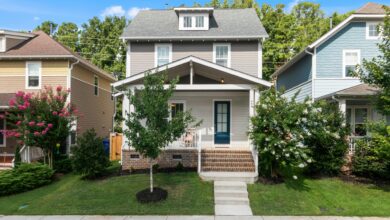With energy costs rising and environmental awareness growing, many homeowners are considering solar power for their properties. While solar power promises renewable energy and long-term savings, there are crucial factors to consider before taking the leap. From understanding the limits of solar energy to evaluating different types of panels, knowing the ups and downs of solar power will help ensure you make the right choice for your home.

Weighing the benefits of solar power for the environment and your wallet
Solar power is undoubtedly a cleaner energy source, as it harnesses the sun’s energy to generate electricity without the emissions associated with fossil fuels. For environmentally conscious homeowners, this means reducing carbon footprints and contributing to a healthier planet. Over time, the switch to solar also reduces energy bills, with savings accumulating as dependence on grid electricity decreases.
Financial incentives from governments make solar an even more attractive option. With rebates and tax credits available in many areas, the initial investment can be offset considerably. However, the benefits of solar aren’t instant; it often takes several years to see a full return on investment, so a long-term view is essential when considering solar power.
How new solar technology outshines old models
Early solar panels were limited in efficiency and durability, with large, clunky frames and less effective energy generation. Old panels could degrade quickly, especially in harsh weather, making them less reliable for long-term use. Homeowners were often hesitant to install these older models, as the low efficiency and maintenance needs outweighed the potential savings.
Today’s solar panels are far more advanced in comparison as they’re designed to last decades with minimal degradation. Newer models are more efficient and often smaller, making them easier to install and maintain. The technology has evolved to produce more power from the same surface area, meaning modern solar panels can generate a substantial amount of energy even in less ideal weather conditions.
Exploring options beyond the roof: ground-mounted panels and solar fences
While rooftop solar panels are the most common option, they aren’t the only way to harness solar power at home. For those with limited roof space or shading issues, ground-mounted solar panels provide an excellent alternative. Ground-mounted systems can be placed in areas with maximum sun exposure, allowing them to operate at optimal efficiency.
Solar power fences are another innovative solution for properties with ample land. A solar fence consists of panels integrated into the structure of a fence, allowing homeowners to generate energy from otherwise unused areas. This option is ideal for those wanting to maximize solar output without sacrificing roof space or the aesthetic of their home.
What solar panels can realistically power in the home
While solar power is effective, it’s important to understand its limitations and what it can realistically power. Solar panels alone may not be sufficient to power an entire household, especially one with high energy demands. Homeowners often find that solar power is best used to supplement electricity needs rather than completely replace grid dependence.
Typical solar panel systems can comfortably power lighting, small appliances, and some heating elements, depending on the array size and energy efficiency of the home. However, high-consumption appliances, such as air conditioners or electric heaters, may still require grid power, particularly during times of low sunlight. Knowing which appliances and systems solar can realistically support helps set expectations for what solar energy can achieve.
Considering local climate and sunlight exposure before installing solar panels
The success of a solar panel system largely depends on climate and geographic location. Homes in regions with high sun exposure, such as the southwestern United States, tend to benefit more from solar energy than those in cloudier or northern regions. More sunlight directly translates to more energy generation, making solar a more cost-effective choice for sunnier locations.
Shading can also impact performance significantly, whether from nearby buildings, trees, or other obstacles. Before installing solar panels, a professional assessment of the home’s sun exposure can determine whether solar power is feasible. For areas with less ideal conditions, supplemental energy storage or hybrid systems might be necessary to maintain reliable power throughout the year.
At the end of the day, the decision to invest in solar should be informed by a clear understanding of energy needs, financial goals, and long-term sustainability. By carefully weighing these factors, homeowners can make an informed choice that aligns with their household’s power requirements. This ultimately ensures that the installation will truly be a source of energy and peace of mind for years to come.




